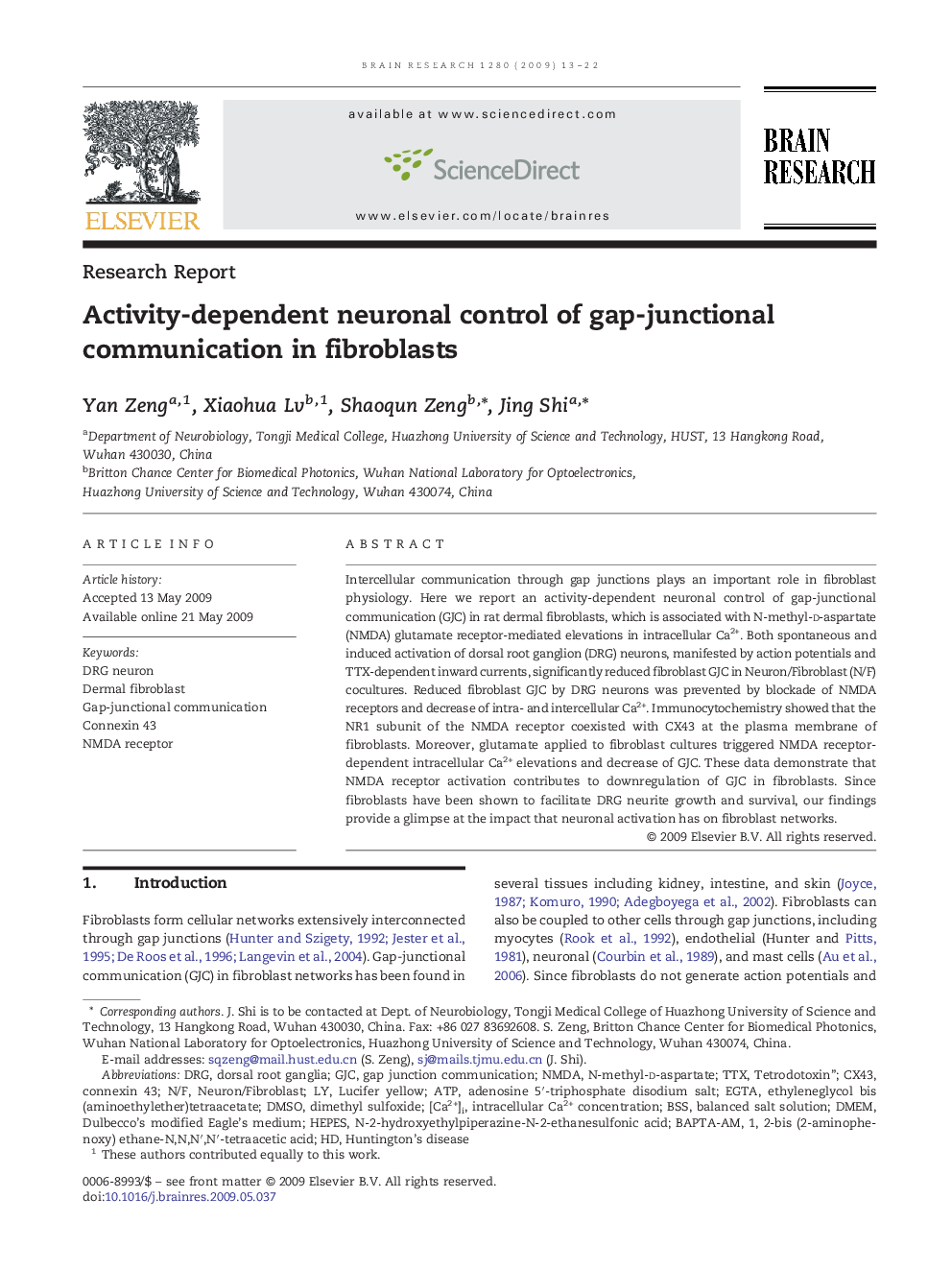| Article ID | Journal | Published Year | Pages | File Type |
|---|---|---|---|---|
| 4328053 | Brain Research | 2009 | 10 Pages |
Intercellular communication through gap junctions plays an important role in fibroblast physiology. Here we report an activity-dependent neuronal control of gap-junctional communication (GJC) in rat dermal fibroblasts, which is associated with N-methyl-d-aspartate (NMDA) glutamate receptor-mediated elevations in intracellular Ca2+. Both spontaneous and induced activation of dorsal root ganglion (DRG) neurons, manifested by action potentials and TTX-dependent inward currents, significantly reduced fibroblast GJC in Neuron/Fibroblast (N/F) cocultures. Reduced fibroblast GJC by DRG neurons was prevented by blockade of NMDA receptors and decrease of intra- and intercellular Ca2+. Immunocytochemistry showed that the NR1 subunit of the NMDA receptor coexisted with CX43 at the plasma membrane of fibroblasts. Moreover, glutamate applied to fibroblast cultures triggered NMDA receptor-dependent intracellular Ca2+ elevations and decrease of GJC. These data demonstrate that NMDA receptor activation contributes to downregulation of GJC in fibroblasts. Since fibroblasts have been shown to facilitate DRG neurite growth and survival, our findings provide a glimpse at the impact that neuronal activation has on fibroblast networks.
